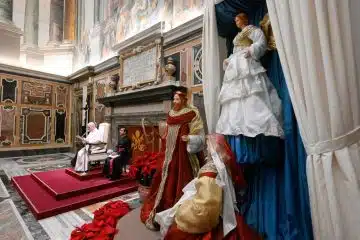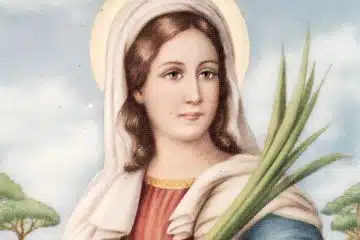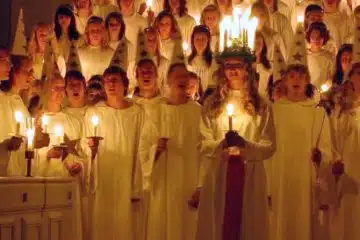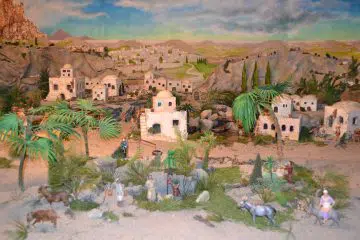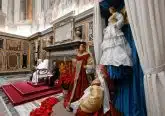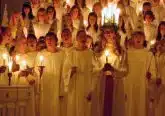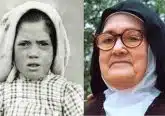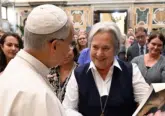Makeup of mission dioceses reflects U.S. church’s changing demographics

IMAGE: CNS photo/Chaz Muth
By Chaz Muth
BOISE, Idaho (CNS) — In the 1980s, a wave of migrants from Mexico and other Latin American countries began to settle in Idaho.
The agricultural industry made the state a prime location for these immigrants, who could work on the farms and ranches, often without having to know too much English or provide legal documents to secure employment.
It also presented the statewide Diocese of Boise — one of the Catholic home mission dioceses in the U.S. — with a set of challenges.
Before the big migration, Idaho had a predominantly white population and there was little need for Spanish-speaking priests, religious sisters or deacons.
The church, schools and government were not prepared for their arrival, said Father Jesus Camacho, parochial vicar of St. Mary’s Catholic Church in Boise, who was ordained in his native Mexico in 1975.
When Father Camacho arrived in Boise in 1981, he was one of only two priests from Mexico in the diocese and there was no Hispanic ministry.
He had been invited to come to Idaho by then-Boise Bishop Sylvester W. Treinen, who was trying to address the language and cultural barriers presented by the new Mexican arrivals, most of whom were Catholic and were looking to the church to meet their pastoral needs and to establish community.
“There was a need everywhere for someone to translate for Spanish-speaking people into English,” Father Camacho said. “In the very beginning, I was frequently invited by the police department, by hospitals, by schools, because there was not at that time the presence of bilingual people around.”
That wave of Latinos continued through the 1990s and into the 21st century.
Hispanics made up about 10 percent of Idaho’s Catholic population in the early 1980s and now it’s more than 50 percent, according to the diocese’s official statistics.
The home mission diocese, with limited resources, had to adjust to the changing demographic, much like the rest of the country, but it happened earlier and faster in Idaho than in the country as a whole, said Bishop Peter F. Christensen, the current bishop of Boise.
With the development of Hispanic ministries, the recruitment of more Spanish-speaking priests and a lot of grant money from the U.S. bishops’ Catholic Home Missions Appeal, the diocese has been able to address the needs of its large Latino population, Bishop Christensen told Catholic News Service during an interview in Boise.
“Having the Mass in Spanish and knowing there are more people like me, who grew up with these traditions in the church, makes me feel like I’m at home in my parish,” said Esmeralda Orozco, a Mexican native living near Jerome.
A majority of the priests in Idaho are now bilingual, but the diocese’s adaptation went beyond the language barrier, said Father Rob Irwin, pastor of St. Jerome Catholic Church in Jerome.
Though many of the younger priests in Idaho are natives of Latin American countries, Father Irwin grew up in Oregon in a traditional white American family.
However, he has immersed himself in Hispanic culture, especially Latino church traditions.
The day after Halloween, he went to the cemetery near his church with several Anglo and Latino families to bless the graves on the Day of the Dead.
It’s one of many Hispanic traditions that Father Irwin incorporates into his ministry and encourages participate by his Anglo parishioners.
Pope Francis often talks about welcoming the stranger. He also frequently discusses the need for an accepting and diverse church.
Bishop Curtis J. Guillory of Beaumont, Texas, another U.S. mission diocese, told CNS that cultural preservation is as important as bringing together diverse communities within the church.
“The challenge is to help people to realize that we are of one faith, one baptism and that we can enrich the church and each other through our cultural diversity,” Bishop Guillory said during an interview in Beaumont.
Like Boise, the Beaumont Diocese has a large Hispanic population, but the churches also have sizable numbers of African-American, Asian and Anglo parishioners, he said.
In 1915, St. Katharine Drexel and the Sisters of the Blessed Sacrament founded three parishes for black Catholics in the Texas towns of Beaumont, Port Arthur and Orange, the same year she founded Xavier University of Louisiana in New Orleans.
St. Katharine Drexel was a Philadelphia heiress who used her personal fortune to fund Catholic schools and parishes for blacks and Native Americans.
Those black parishes are a symbol of the proud history the Beaumont Diocese has in serving diverse communities, said Father Lowell Case, pastor of Our Mother of Mercy Catholic Church in Beaumont.
There also is a vivid tradition of pastoral care to Native American Catholics in the mission dioceses of Gallup, New Mexico, and Juneau, Alaska, as well as others throughout the United States.
Cross-cultural connection is encouraged in many of the U.S. mission dioceses.
Father Jean Pauline Lockulu is from the Democratic Republic of the Congo and is serving as a priest in the Diocese of Juneau. While he shares his religious traditions with his parishioners, he said his faith is enriched by the cultural expression of the Native Americans who attend his church.
A cross-cultural experience in church may be ideal, but it doesn’t always pan out.
Father Adrian Vazquez, an administrator of four faith communities in eastern Idaho, told CNS that he often encourages his Anglo parishioners to participate in the Our Lady of Guadalupe festivities, which is a traditional feast day in the Hispanic community.
However, the priest manages to pique the interest of only a few white parishioners each year.
“Many of the Anglos don’t know that much about Our Lady of Guadalupe and feel like they would rather just celebrate their devotion to Mary on the feast of the Immaculate Conception,” Father Vazquez said.
The native of Mexico sometimes celebrates a bilingual Mass to accommodate all members of his church communities, mostly because his time is spread so thin that holding separate Masses in English and Spanish isn’t always practical.
“They come, but afterward they say, ‘Father, we really would appreciate two Masses, one in English and one in Spanish,'” he said. “They do not totally reject it, but you see the expressions.”
Cross-cultural connection is not always easy, Bishop Guillory said.
“I tell the pastors that it’s something that they have to educate and promote,” he said. “Because there is a certain amount of fear of a different culture and sometimes even prejudice. So, we have to break through that.
“Once we break through that it’s amazing in what happens,” Bishop Guillory said.
Culture often gets in the way of humanity, he said, “because we remain on the cultural level. A lot of times, that’s all stereotypes and how we get below the cultural level to our humanity is in dialogue. Coming together, understanding, talking, etc.”
– – –
Contributing to this story was Tyler Orsburn in Beaumont.
– – –
Follow Chaz Muth on Twitter: @Chazmaniandevyl.
– – –
Copyright © 2016 Catholic News Service/U.S. Conference of Catholic Bishops. www.catholicnews.com. All rights reserved. Republishing or redistributing of CNS content, including by framing or similar means without prior permission, is prohibited. You may link to stories on our public site. This copy is for your personal, non-commercial use only. To request permission for republishing or redistributing of CNS content, please contact permissions at [email protected].



